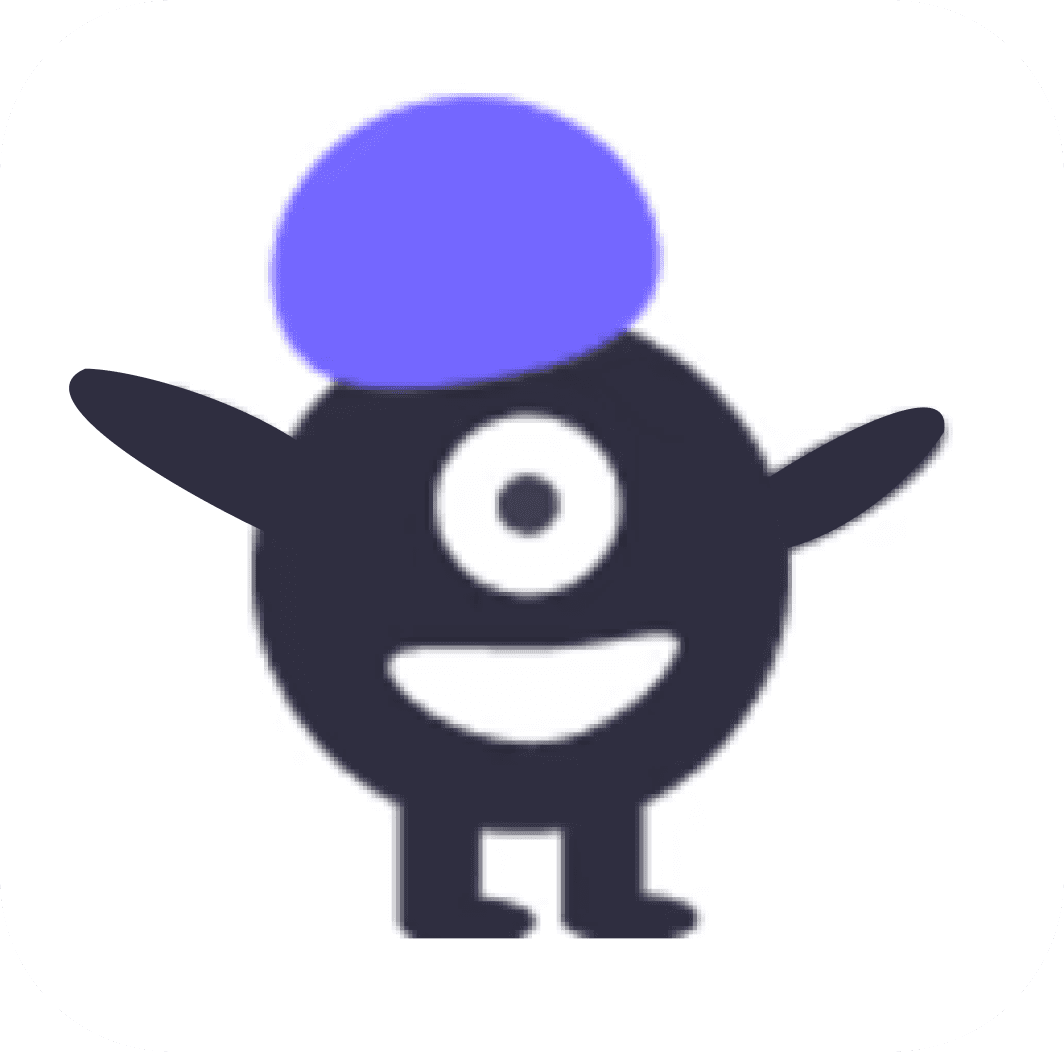Table of contents:
Let’s be real—team bonding often gets pushed aside when work gets busy. Deadlines pile up, emails keep coming, and meetings take over the day. It’s easy to assume there’s just no time for team-building activities.
But here’s the thing: you don’t need an hour-long workshop to help your team feel more connected. A simple, 10-minute game can be enough to spark conversations, lighten the mood, and strengthen relationships—without disrupting work.
Whether your team is remote, in the office, or a mix of both, quick team-building exercises can boost morale, enhance team dynamics, and improve communication in just a few minutes. These activities help team leaders create an engaging work environment where team members feel more connected, strengthening team spirit and collaboration.
Below, you’ll find a list of quick team activities you can try anywhere. Pick one, give it a go, and see how a few minutes of fun can make a big difference in your team’s energy!
1. ❗❓ This or That (Braid)
Quick choices, fun debates, and instant team bonding!

This or That is a quick, interactive icebreaker where players pick between two options—pizza or sushi, beach or mountains, cats or dogs—and compare results. The choices are simple, but the discussions they spark make the game fun and engaging.
It’s a great way to discover fun facts about teammates, encourage lighthearted debates, and make quick decisions in a relaxed setting.
Since there’s no right or wrong answer, everyone can participate without feeling pressured. After selecting the choices, players see the results in Slack, making it easy to compare answers, find shared preferences, and start casual conversations.
For example:

Teams can play a default round of five random questions or customize their own list of choices, adding a personal touch to the game.
With endless possible questions, custom options, and quick gameplay, This or That is a go-to game for remote and hybrid teams looking to stay connected. It’s fun, fast, and the perfect way to bring people together in just a few minutes!
Best Times to Play This or That
Morning kickoff - Start the day with a lighthearted game to boost energy.
Between meetings - A quick break to reset and refresh the team.
New team intros - A stress-free way to get to know coworkers.
Remote team bonding - Play in Slack for casual engagement across time zones.
2. ⌨️ Typing Test (Braid)
Fast fingers, high scores, and a battle for the Typing Champion title!

Typing Test is a fast-paced game where players race to type a short passage as quickly and accurately as possible.
It’s an easy way to add some fun competition to the day while also sharpening typing skills. The challenge? Finding the right balance between speed and accuracy because every typo counts!
Each round lasts up to two minutes, and the passage is filled with fun facts to keep things interesting. Once the test is complete, results, including words per minute, accuracy, and a final score, are instantly shared in Slack.
Whether you’re a lightning-fast typer or just want to give it a try, it’s a quick game that keeps energy high and the team engaged.
Sample passage:

Typing Test is great for a mental reset, a friendly challenge, or just some midday fun. It’s a simple way to bring teammates together.
Best Times to Play Typing Test
Morning kickoff - A quick game to start the day with energy.
Between meetings - A fun way to reset and refocus.
Casual competitions - Challenge teammates to see who types the fastest.
End-of-week showdown - Wrap up the week with some lighthearted fun.
3. 🔗 Word Link (Braid)
Keep the chain going—how long can your team last?

Word Link is a quick word game where players take turns adding words that start with the last letter of the previous word. It’s a fun and simple way to challenge vocabulary, boost quick thinking, and spark creativity.
Whether you’re a word game lover or just looking for a casual team break, this game keeps the energy high and the competition friendly.
Each game lasts up to 20 turns, depending on what the team chooses. Every word earns points based on letter count, so the longer the word, the higher the score!
Sample gameplay:

If a word is misspelled or doesn’t fit the chain, it won’t count. At the end of the round, the leaderboard shows who built the longest link, used the rarest word, and earned the highest score.
Word Link is perfect for teams who love a challenge, enjoy wordplay, or just need a quick mental refresh during the day. It’s a simple way to keep brains engaged while having fun together.
Best Times to Play Word Link
Brainstorming sessions - Get creative energy flowing before a big meeting.
Quick team breaks - A fun way to recharge in just a few minutes.
End-of-day wind-down - Relax with a light, low-stress game.
Remote team bonding - Play in Slack to keep teams connected, no matter where they are.
4. 🖼️ Picture Puzzle (Braid)
Crack the code—can you solve the puzzle before everyone else?

Picture Puzzle is a visual brain teaser where players guess the words that describe the image. It’s a fun, interactive way to challenge your mind, spark creative thinking, and test your ability to interpret clues. Whether you play solo or with a team, every puzzle is a new challenge!
Each round, players receive a picture along with a category hint. The goal? Figure out the correct answer using the fewest guesses.
For example:

The faster you solve it, the better! Results are sent to Slack at the end, showing who guessed correctly first and how many attempts it took.
If your team enjoys riddles, loves visual challenges, or wants a quick, fun way to engage, Picture Puzzle is the perfect game for your team. It’s an easy way to boost problem-solving skills while having a great time together.
Best Times to Play Picture Puzzle
Morning brain warm-up - Start the day with a quick puzzle to get thinking.
Break-time challenge - Take a short break and test your problem-solving skills.
Friendly team competition - See who can solve the puzzle first!
Remote team engagement - A great way to stay connected and have fun in Slack.
5. 🧠 Trivia (Braid)
Put your knowledge to the test—who will claim the top spot?

Trivia is a fast, interactive game where players answer multiple-choice questions across different categories. It’s a great way to spark friendly competition, challenge your brain, and learn something new.
Whether you’re a trivia pro or just taking a guess, every round keeps the team engaged and entertained!
Each game allows players to customize categories, select the number of questions (3–10), and set a time limit per question (10, 20, or 30 seconds).
Sample question:

The correct answer is Dondurma.
Answer faster to earn more points! At the end of the round, results are shared in Slack, revealing who was the quickest, who got the most right, and who dominated the leaderboard. With a wide range of topics, every game feels fresh and exciting!
Trivia is perfect for teams who love a challenge, enjoy quick learning moments, or just want a fun break together. It’s an easy way to boost engagement and add energy to any workday.
Best Times to Play Trivia
Pre-meeting icebreaker - Get the team thinking and engaged before discussions.
Lunchtime fun - Add a bit of a challenge to break up the workday.
Casual team bonding - Compete and laugh together over fun facts.
Friday face-off - End the week with a friendly trivia battle!
6. 🔨 Wordsmith (Braid)
Team up, think fast, and build as many words as possible!

Wordsmith is a collaborative word game where players work together to form words from a set of seven letters.
It’s a fun way to challenge vocabulary skills, test quick thinking, and boost teamwork—all while climbing the ranks from Apprentice to Grandmaster!
Each team receives seven random letters in a private DM and has one minute to create as many words as possible. Longer words score more points, and if you use all seven letters, you get a special bonus!
When time’s up, scores are revealed in Slack, showing which team found the most words and who earned the highest points.
Sample letters you can receive:

Whether you're a word game pro or just jumping in for fun, Wordsmith keeps everyone on their toes, thinking fast and working together. It’s a mix of strategy, teamwork, and quick reflexes, making it a great way to shake up the day with a little friendly competition.
Best Times to Play Wordsmith
Morning brain boost - Kickstart the day with a quick word challenge.
Midday reset - Take a short break and refresh your mind.
Team strategy sessions - Practice thinking quickly as a group.
End-of-day wind-down - Unwind with a fun, low-stress game.
7. 🔢 Count-Up
Sounds simple, right? Just count to 20. But can your team do it without messing up?
Count Up is a deceptively tricky challenge where team members take turns counting aloud from 1 to 20—without planning, signaling, or speaking over each other.
The catch? If two people talk at the same time, the count resets to zero. It might seem like an easy task, but staying in sync as a group without verbal cues is harder than it looks.
The game forces players to be patient, pay attention, and trust their teammates. You’ll quickly see who jumps in too soon, who hesitates, and how the team adapts to find a rhythm.
The real fun comes when the group fumbles, resets, and works together to improve with each attempt. It’s a simple yet powerful way to sharpen focus, build teamwork, and spark plenty of laughs along the way.
Best Times to Play Count-Up
Morning kickoff - Start the day with a fun challenge that boosts focus.
Mid-meeting refresh - Reset attention and get everyone engaged.
New team icebreaker - Break the awkwardness and build team synergy.
Friday challenge - Compete to see how far your team can get before resetting!
8. ⏳ Speed Networking
One minute, one fact—how well do you really know your team?
Speed Networking is a rapid-fire way for team members to introduce themselves and share something unique. Each person gets one minute to tell the group a fun fact—maybe a strange talent, a favorite travel destination, or the weirdest job they’ve ever had. No generic work titles or scripted intros—just interesting details that spark real conversations.
By the end of the game, teammates discover surprising commonalities and remember details that stick. Who speaks five languages? Who met their childhood hero? Who once adopted a stray turtle? The fast-paced structure keeps the energy up and makes connecting with coworkers effortless.
It’s a great alternative to forced icebreakers—team members pair up for quick conversations, share what they want, and the room feels lighter almost instantly.
Best Times to Play Speed Networking
New team introductions - Ditch awkward intros and create real connections.
Cross-department meetups - Help different teams break the ice and learn about each other.
Pre-event warm-up - Loosen up before a retreat, conference, or workshop.
Casual Friday fun - Wrap up the week with a lighthearted conversation starter.
9. 🎭 Two Truths and a Lie
Think you can fool your team? Time to put your storytelling skills to the test!

In this classic guessing game, each player shares three statements about themselves—two true and one false. The challenge? Make the lie believable enough to trick the team. Everyone takes turns guessing which statement isn’t true, leading to plenty of debate, surprises, and funny reactions.
It’s more than just a guessing game—it’s a way to learn unexpected things about teammates. Someone might reveal they’ve gone skydiving, once acted in a TV commercial, or can solve a Rubik’s cube in under a minute. Whether the team guesses correctly or not, the real fun is in hearing the wild backstories behind each fact.
This game works in almost any setting because it’s low-pressure, interactive, and filled with laughter. It sparks great conversations, especially when teammates find out they have unexpected things in common.
Best Times to Play Two Truths and a Lie
New team bonding - Get to know coworkers without forced small talk.
Casual team check-ins - Add a fun twist to your regular meetings.
Onboarding activity - Help new hires feel included in a relaxed way.
End-of-week wind-down - Unplug from work and share some laughs.
10. 🎲 Rapid Word Relay
Fast thinking, quick words—can your team keep up?
In Rapid Word Relay, players take turns saying a word that fits a chosen category, like "fruits" or "movies." The catch? You only have three seconds to respond! If you hesitate or repeat a word, you're out. The last player standing wins the round.
The game starts off easy, but as the category narrows and the pressure builds, even the simplest words become hard to remember. It’s a great way to get everyone thinking fast, testing their reflexes, and laughing at those last-minute brain freezes.
Rapid Word Relay works well because it's low-pressure, easy to explain, and quick to play. No complicated setup—just pick a category and go!
Best Times to Play Rapid Word Relay
Brainstorming warm-up - Get the team thinking fast before a big idea session.
Quick mental reset - Shake off brain fog with a short, energizing challenge.
Casual team competition - See who can think on their feet the fastest.
Slack-friendly game - Play in chat for an easy, remote-friendly version.
11. 🔎 Lightning Scavenger Hunt
Find it fast! Who can grab the item first?
The host calls out an object—"something round," "an item that starts with B," or "your strangest desk item"—and everyone races to find it. The first person to return and show their item wins the round.
What makes this game fun is its unpredictability and fast pace. In remote teams, it’s hilarious to see what people dig up from their home offices. In-person teams scramble through drawers and desks, leading to surprising, creative finds.
It’s a game that gets people moving, laughing, and thinking outside the box. The mix of competitiveness and silliness keeps everyone engaged, no matter where they’re playing.
Best Times to Play Lightning Scavenger Hunt
Midday energy boost - Get the team moving and re-energized.
Virtual team bonding - Bring remote coworkers together in a shared challenge.
Casual Friday activity - Lighten the mood before the weekend.
Post-lunch wake-up - Shake off the afternoon slump with quick action.
12. 🤫 Silent Line Up
No talking, no planning—just teamwork and non-verbal communication!

In this challenge, team members must arrange themselves in a specific order—by birthday, height, or years at the company—but without speaking. Gestures, facial expressions, and body language are the only tools allowed.
It’s a surprisingly fun way to test problem-solving and teamwork skills in a totally new way. Players quickly realize how much they rely on verbal communication skills and get creative with hand signals, pointing, and exaggerated movements to get into the right order.
Silent Line Up creates instant teamwork, lots of laughs, and a great sense of accomplishment when the team finally gets it right.
Best Times to Play Silent Line Up
Team retreats - A great in-person bonding activity.
Mid-meeting energizer - Reset focus with a quick, interactive challenge.
Cross-team collaboration - Encourage teamwork in a new way.
Onboarding activity - Help new team members integrate in a fun, hands-on way.
13. 🎭 Emoji Storytelling
Can you tell a story… using only emojis? Let’s find out!
This creative challenge puts a fun twist on storytelling. Instead of using words, players send a string of emojis in Slack, and their teammates interpret them into a short story.
For example, 🏖️☀️🍉🐠 could turn into: "One summer, I went to the beach, ate watermelon, and saw a fish while swimming!" But the real fun comes when people get creative with their emoji choices, leading to unexpected and hilarious interpretations.
What makes this game special is how it encourages imagination and sparks team engagement in a way that doesn’t require long explanations or deep thinking. It’s a quick, fun break that lets teammates show their personalities, make each other laugh, and even create inside jokes.
Some stories might be totally straightforward, while others turn into wild, unexpected narratives—it all depends on how the emojis are interpreted!
Because it’s visual and low-pressure, Emoji Storytelling works well for remote teams, async fun, or as a lighthearted meeting warm-up. There’s no right or wrong answer; just a chance to get creative, interact, and have a good time together.
Best Times to Play Emoji Storytelling
Creative warm-up - Get the team thinking outside the box before brainstorming.
Quick Slack fun - Play asynchronously in a chat thread for casual interaction.
Casual team check-in - Lighten up a meeting with a playful activity.
Virtual bonding - A fun way to engage remote teams without much effort.
14. 🔄 Reverse Q&A
Flip the script—let the team ask the questions!
Most icebreakers ask a question, and players respond. Reverse Q&A does the opposite—one person gives a random fact about themselves, and the rest of the team has to guess what the original question was.
For example, if someone says, "I once lived in Italy for a year," the team might ask: "What’s a fun fact about your past?" or "Where’s the most interesting place you’ve lived?"
This game works because it encourages curiosity, sparks unexpected conversations, and helps teammates learn more about each other naturally. Instead of standard introductions, people reveal fun facts about themselves in an engaging, interactive way.
The back-and-forth nature of guessing keeps everyone involved, and the responses often lead to fun stories, surprising connections, and lots of laughter.
Reverse Q&A isn’t just an icebreaker—it’s a way to keep conversations flowing, get people thinking differently, and make team bonding feel more organic. It’s especially fun with a mix of personalities, as some players will reveal adventurous stories while others share quirky, unexpected details.
Best Times to Play Reverse Q&A
New hire introductions - Skip the usual “tell us about yourself” and make it engaging.
Meeting warm-ups - Get people actively involved right from the start.
End-of-day wind-down - Wrap up with a light, conversational activity.
Cross-team bonding - Help different departments connect over fun discoveries.
15. 🏆 5-Second Rule
Fast thinking, quick words—can you name three things in five seconds?
This high-energy game tests how quickly players can think under pressure. The concept is simple: the host gives a player a random prompt like "Name three things you always have in your bag" or "Name three animals that live in the ocean."
The catch? They only have five seconds to answer! If they hesitate or can’t think of three things in time, their turn is over.
The beauty of this game is that it pushes players to react instantly, often leading to hilariously unexpected answers as they scramble to beat the clock. Someone asked to name three types of fruit might confidently say, "Apple, banana… uh… pizza?" just to get an answer in before time runs out. The mix of urgency and silliness makes for a fast, fun challenge that keeps everyone on their toes.
Because it requires little setup and moves quickly, 5-Second Rule is perfect for energizing the team in short bursts. Existing team members can use it to challenge each other in a fun, fast-paced way while keeping the energy high.
Best Times to Play 5-Second Rule
Morning energy boost - Wake up the team with a fast-paced challenge.
Between meetings - A great way to reset focus and get people laughing.
Casual competition - See who thrives under pressure!
Slack-friendly game - Works great as a quick text-based challenge.
Team Bonding Made Easy with Braid
Building strong team connections doesn’t have to be time-consuming or complicated. Some of the best moments of teamwork happen in quick, spontaneous interactions—a shared joke, a friendly competition, or a fun challenge that gets everyone involved.
When teams feel comfortable with each other, communication flows more naturally, collaboration improves, and overall morale stays high.
But let’s be honest—traditional team-building exercises can feel forced, awkward, or just another item on the to-do list. Instead of structured icebreakers, why not make bonding a natural, fun part of the workday?
With six fun, easy-to-play games available right inside Slack, Braid makes team bonding effortless. In fact, getting started takes just two simple steps:
Go to Braid’s website and click “Add to Slack.”
Grant the necessary permissions, and you’re ready to play!
That’s it! Your team can jump into Trivia, This or That, Word Link, and more—anytime, anywhere. And the best part? Braid will soon be available on Microsoft Teams, so even more teams can enjoy quick, engaging moments together.
Create Meaningful Team Bonds in Minutes with Braid!

Team-building works best when it’s quick, natural, and enjoyable. A few minutes of shared fun can boost morale, encourage collaboration, and strengthen team connections—without interrupting the workday.
Braid makes it easy to bring teams together. With six interactive games built directly into Slack, teams can engage, compete, and have fun without switching platforms or setting up complicated activities.
And the best part? Braid will soon be available on Microsoft Teams, making it even more accessible for hybrid and remote teams.
If you’re ready to make team bonding a natural part of your workday, schedule a demo today!
FAQs About Quick Team-Building Activities
What is a quick team-building game?
A quick team-building game is a short, engaging activity that helps coworkers connect without disrupting work. Examples include This or That, where teammates choose between two options in Slack, Typing Test, a fun speed challenge, and Word Link, a word-building game. These games are easy to play and keep team members engaged.
What is a 5-minute team energizer?
A 5-minute team energizer is a quick activity that boosts energy and engagement. Lightning Scavenger Hunt gets teams moving, while Picture Puzzle challenges players to guess a hidden phrase from an image. These games work well before meetings, after lunch, or as a mid-day reset.
What are five team-building activities?
Some quick and fun team-building activities include Two Truths and a Lie for storytelling, Speed Networking for quick introductions, Trivia for friendly competition, Silent Line Up for teamwork without words, and Wordsmith for group word-building. Each game takes minutes but strengthens team connections.
What is a 15-minute icebreaker activity?
A 15-minute icebreaker gives teams more time to connect. Reverse Q&A gets teams guessing the original question behind a random fact, while 5-Second Rule challenges players to name three things in a category under pressure. These activities keep conversations flowing and make team bonding fun.
How can remote teams stay engaged with team-building games?
Remote teams can stay engaged by playing interactive games directly in Slack. Braid offers fun options like This or That for quick icebreakers, Word Link for word challenges, and Trivia for friendly competition. These games help remote teams bond, spark conversations, and keep team spirit high, no matter where they’re working from.
Related Posts
Braid Social, Inc.










